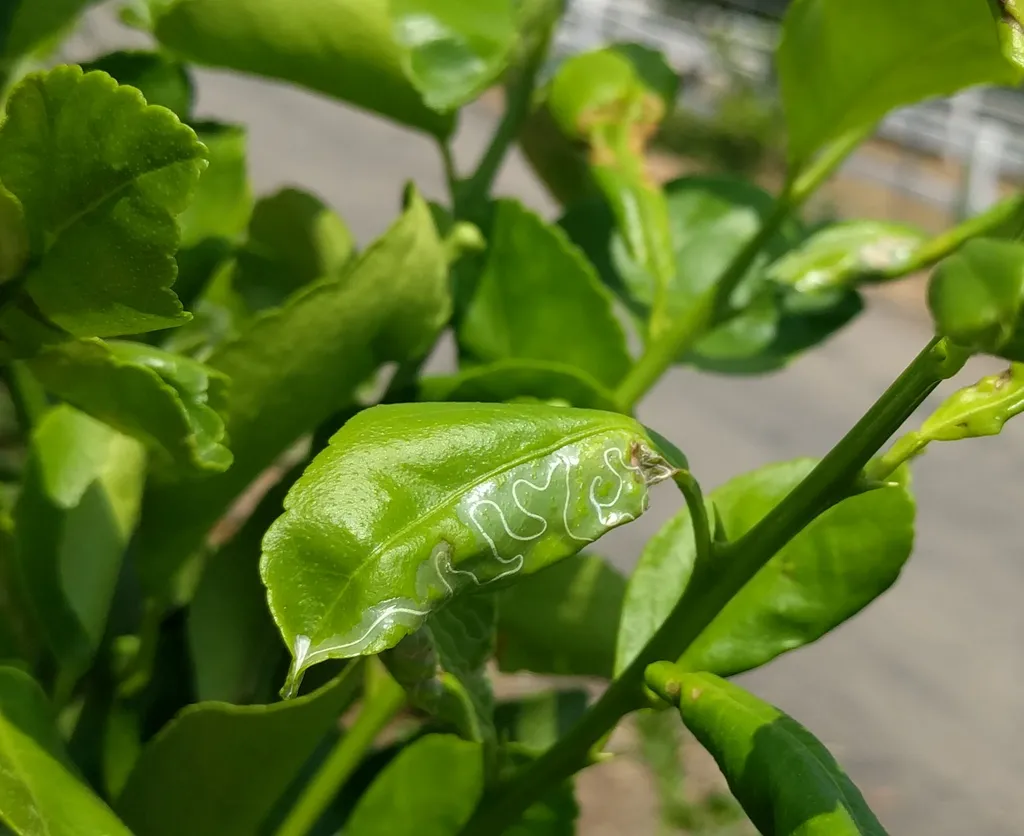In the ever-evolving world of agriculture, the battle against pests is a constant challenge. A recent study published in *Industrial Crops and Products* offers a promising strategy for managing citrus mites, a significant threat to citrus crops worldwide. The research, led by Muhammad Asif Qayyoum of the Institute of Entomology at Guizhou University and the Guangdong Provincial Key Laboratory of High Technology for Plant Protection, explores the transgenerational impacts of low-lethal acaricide exposures on Panonychus citri and its compatibility with the predator Neoseiulus californicus.
Panonychus citri, commonly known as the citrus red mite, is a notorious pest that can devastate citrus orchards. Traditional acaricides have been effective but often come with a host of issues, including environmental concerns and the development of resistance in pest populations. This study takes a different approach, focusing on low-lethal concentrations of acaricides and their multigenerational effects.
The researchers exposed adult female P. citri to low-lethal concentrations of a novel acaricide (SYP-9625), abamectin, mineral oil, or vegetable oil. The results were striking. All treatments significantly reduced the fecundity and survival of the parent generation (F0), leading to suppressed population growth in the offspring (F1). “Offspring from synthetic acaricide-treated mothers developed more slowly,” Qayyoum notes, “whereas oil-based treatments did not prolong F1 development but still shortened the offspring’s lifespan and reduced their fecundity.”
One of the most intriguing findings was the synergistic toxicity observed when binary mixtures of botanical oils and synthetic acaricides were used. These mixtures yielded higher mortality rates in P. citri than the respective single compounds, suggesting a powerful combination for pest control.
But the study didn’t stop at acaricides. The researchers also integrated the predator Neoseiulus californicus into the treatment regimen. The results were impressive. Predator–acaricide combinations caused faster and higher P. citri mortality and prevented pest resurgence. Importantly, the low-lethal treatments were largely innocuous to the predator. “Neoseiulus californicus survival and oviposition were not significantly affected by these treatments, particularly in the oil-treated groups,” Qayyoum explains. However, abamectin residues did cause an initial repellent effect on the predators, a factor that could be managed with careful application timing.
The implications for the agriculture sector are substantial. This research supports the use of predator-compatible, low-lethality acaricides in integrated pest management (IPM) of citrus mites. By combining selective acaricides with biological control agents like N. californicus, farmers can achieve efficient mite suppression without harming beneficial predators. This approach not only enhances pest control but also promotes sustainable agriculture practices.
As the agriculture industry continues to seek more effective and environmentally friendly pest management strategies, this study offers a beacon of hope. The findings suggest that transgenerational fitness costs imposed on pests, combined with biological control, can lead to more sustainable and effective pest management. This could shape future developments in the field, encouraging further research into low-lethal treatments and their compatibility with natural predators.
In the words of Qayyoum, “These findings support the use of predator-compatible, low-lethality acaricides in integrated pest management of citrus mites.” This research, published in *Industrial Crops and Products* and led by Qayyoum at the Institute of Entomology, Guizhou University, and the Guangdong Provincial Key Laboratory of High Technology for Plant Protection, is a testament to the power of innovative thinking in agriculture. It’s a step forward in the ongoing quest to protect our crops and ensure food security for future generations.

